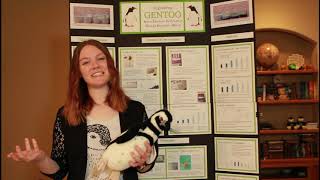By Zoe Gotthold
The problem: Oil spills are environmental catastrophes--yet much of the danger comes from the less-famous emulsion that forms between spilled oil and seawater. This emulsion increases the volume of the spill, and floats underwater, threatening animals, especially penguins.
The solution: If we can separate the emulsion, the oil will float back to the surface, where it is far easier to remediate. I developed prototypes to do exactly that: reduce overall emulsion stability (by up to 25%) by passively attracting oil/water particles. Think of emulsions like a card towers, and my demulsifying devices as “card magnets” that pull out certain cards and destabilize entire towers. These devices can then be added to spill areas to protect sea life and the environment.





























